Victoria 1 rupee: 1891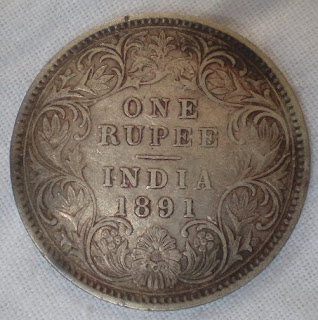
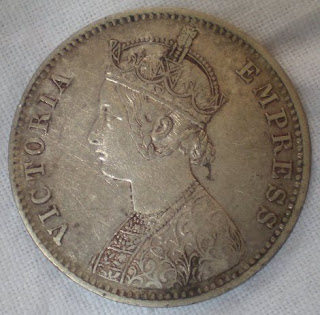
Bud patterns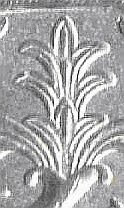 Type I
Type I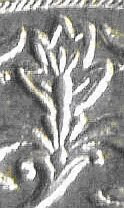 Type II
Type II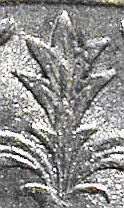 Type III
Type III Type IV
Type IV
Bust patterns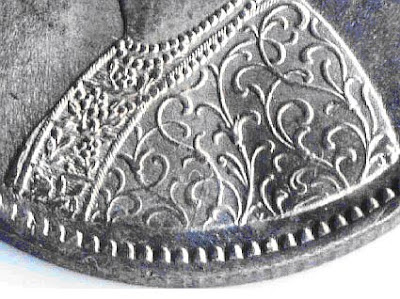 Pattern Type A
Pattern Type A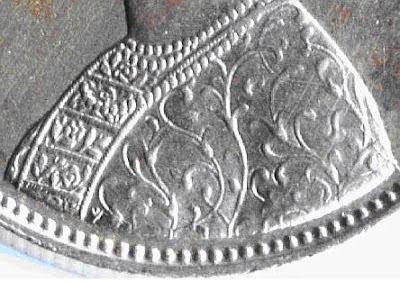 Pattern Type B
Pattern Type B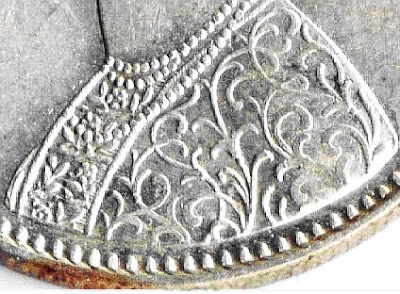 Pattern Type C
Pattern Type C


This rupee was also minted in silver.
Coins minted from 1862 through 1873 all have the date 1862.
The legend reads "Victoria Queen" for coins dated 1862 - 1876.
It reads "Victoria Empress" for coins dated 1877 - 1901.
The Rupee coin has several reverse designs, which can most easily be identified by examining the flower at the very top of the coin. There appears to be many minor varieties. Following is a description of the basic reverse types.
Reverse I - The top flower is open with long, curved petals. The "1" in the date has a flat top.
Reverse II - The top flower is closed. The "1" in the date has a slanted top.
Reverse IIa - Variant of Type II on a few 1862 Rupees. Similar to type II, but the flower buds above the "E" of "ONE" and above right of the second "E" of "RUPEE" have a pineapple-like pattern.
Reverse III - The top flower is half open. The "1" in the date (1862) has a flat top.
Reverse IV - Variant of Type II reported by W.A.T. Aves in a Feb 1984 Seabys Coins and Metals Bulletin and confirmed by collector Bob Johnston. This reverse type is so far known to exist on the Bombay Rupees for the years 1879, 1880, 1881 and 1882. Reverse IV is slightly different in many areas but the most recognizable difference is in the lotus flower to left of the date. The type II flower has five petals, while the type IV has three larger petals.
Coins minted from 1862 through 1873 all have the date 1862.
The legend reads "Victoria Queen" for coins dated 1862 - 1876.
It reads "Victoria Empress" for coins dated 1877 - 1901.
The Rupee coin has several reverse designs, which can most easily be identified by examining the flower at the very top of the coin. There appears to be many minor varieties. Following is a description of the basic reverse types.
Reverse I - The top flower is open with long, curved petals. The "1" in the date has a flat top.
Reverse II - The top flower is closed. The "1" in the date has a slanted top.
Reverse IIa - Variant of Type II on a few 1862 Rupees. Similar to type II, but the flower buds above the "E" of "ONE" and above right of the second "E" of "RUPEE" have a pineapple-like pattern.
Reverse III - The top flower is half open. The "1" in the date (1862) has a flat top.
Reverse IV - Variant of Type II reported by W.A.T. Aves in a Feb 1984 Seabys Coins and Metals Bulletin and confirmed by collector Bob Johnston. This reverse type is so far known to exist on the Bombay Rupees for the years 1879, 1880, 1881 and 1882. Reverse IV is slightly different in many areas but the most recognizable difference is in the lotus flower to left of the date. The type II flower has five petals, while the type IV has three larger petals.
Bud patterns
 Type I
Type I Type II
Type II Type III
Type III Type IV
Type IV
The Rupee coin has three distinct Obverse designs, which can be identified by examining the panels on the front of the dress.
Bust A - The front of the dress has 3-3/4 panels
Bust C - The front of the dress has 3-½ or 3-1/3 panels … check the flower on the right of the bottom panel … it has fewer leaves than the one in Bust A
Bust B - The front of the dress has 4-¼ panels
Bust A - The front of the dress has 3-3/4 panels
Bust C - The front of the dress has 3-½ or 3-1/3 panels … check the flower on the right of the bottom panel … it has fewer leaves than the one in Bust A
Bust B - The front of the dress has 4-¼ panels
Bust patterns
 Pattern Type A
Pattern Type A Pattern Type B
Pattern Type B Pattern Type C
Pattern Type C
No comments:
Post a Comment